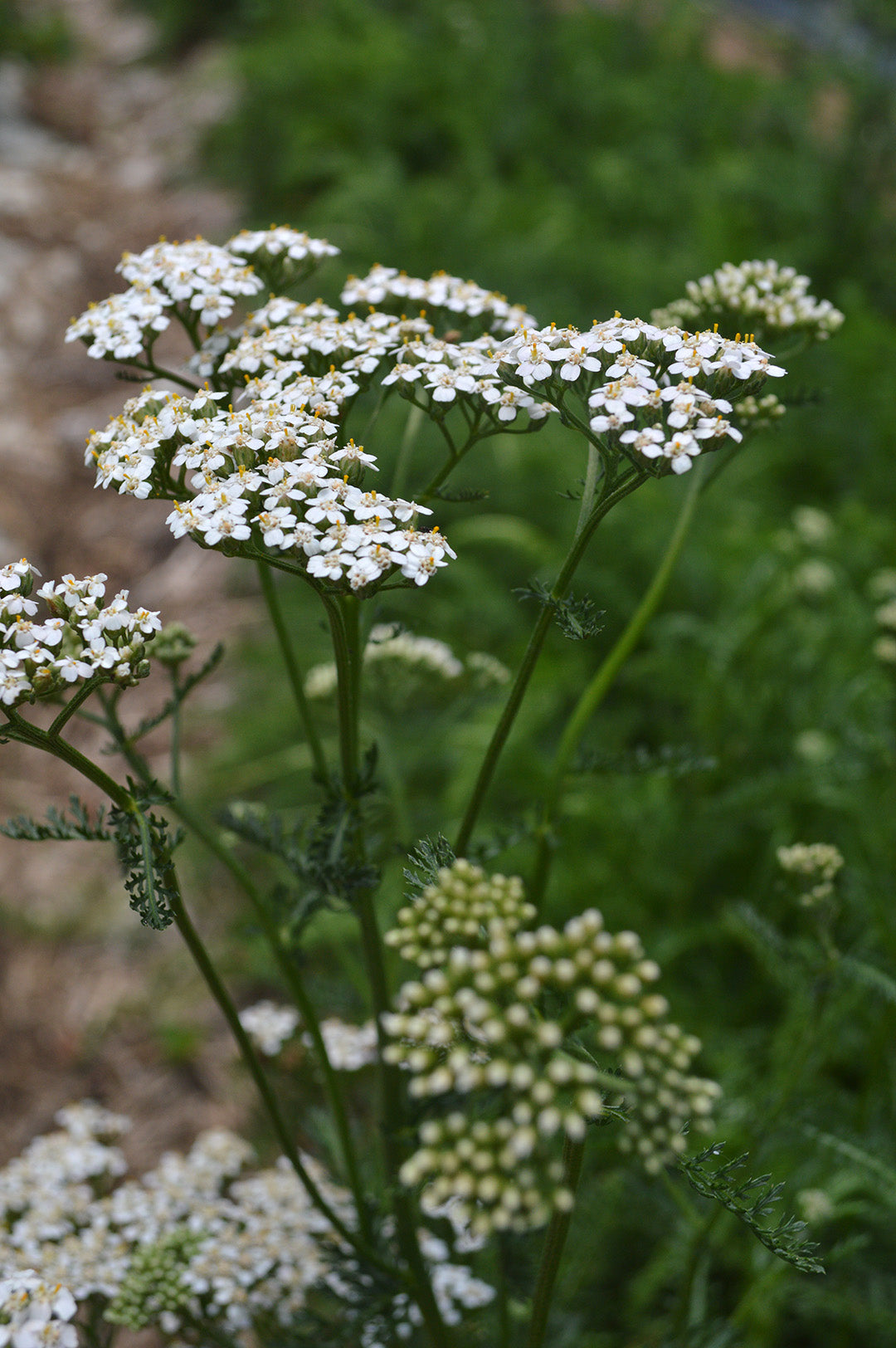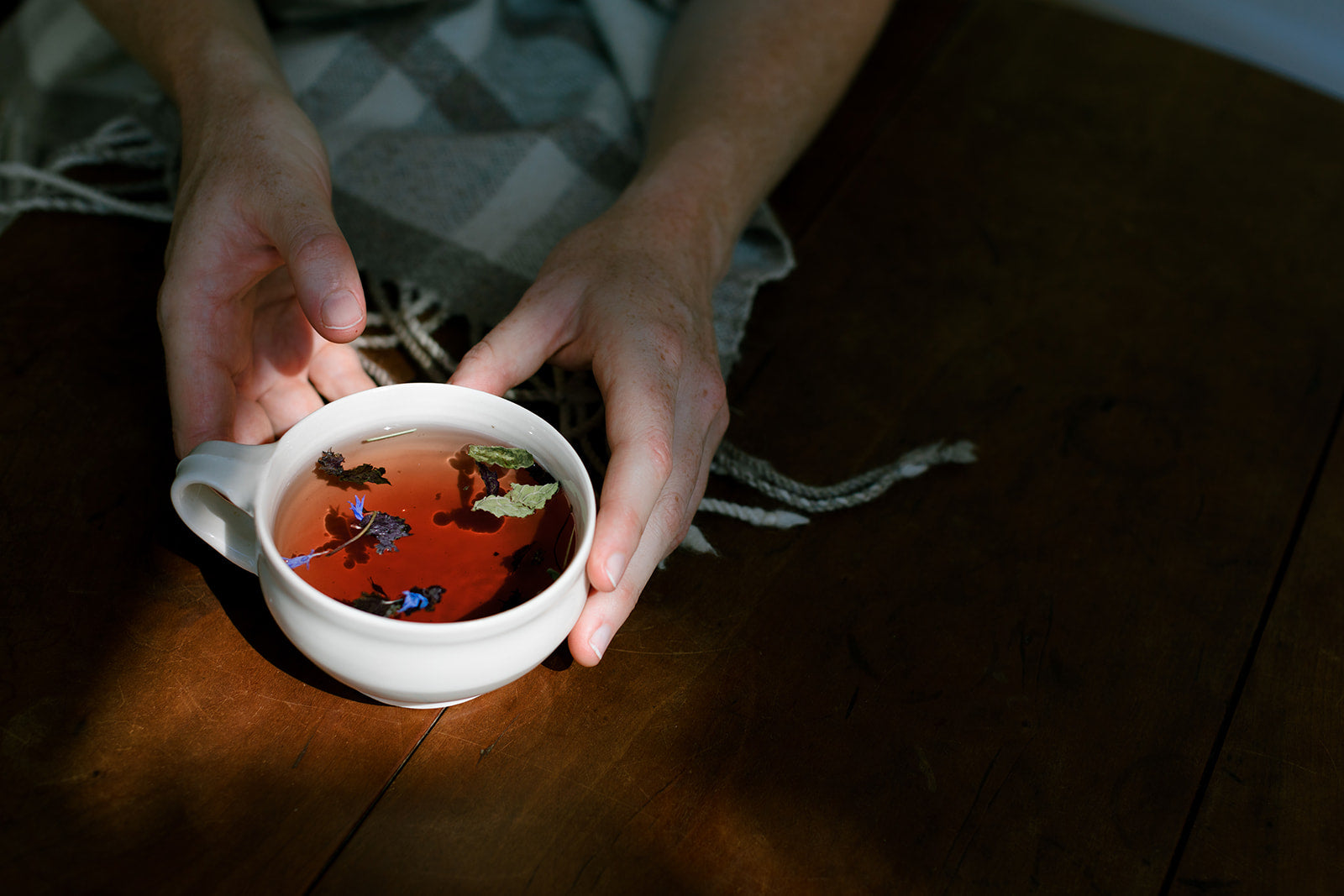White Yarrow: Skin Benefits and Medicinal Uses
Yarrow in History

Common yarrow or white yarrow (Achillea millefolium), is an herbaceous perennial plant used widely in contemporary herbalism. Achillea species are found all over the world and have been used in herbalism traditions in Europe, India, China, North America and the Middle East. Humans have relied on yarrow for thousands of years to stop bleeding and heal wounds: Its latin name, Achillea, was named after the mythologized Greek warrior Achilles, who supposedly used yarrow to tend to his soldiers' battlefield injuries.
Medicinal Properties of Yarrow
The age-old uses of yarrow have stood the test of time and science. Research shows that yarrow extract can speed up wound closure, reduce wound size by half compared to untreated ones, and minimize scarring. Beyond wound healing, yarrow can also be used to soothe irritated skin and calm inflammation. Historically it's been used to treat inflammatory conditions and as an antimicrobial. Modern studies show that yarrow extracts have immune enhancing properties that can help mediate skin barrier damage and related conditions like atopic dermatitis. It’s also stellar for skin rejuvenation therapy to plump skin, improve tone, reduce wrinkles and naturally minimize pores - even outweighing the effects of glycolic acid, a widely used chemical exfoliant used for skin rejuvenation.
While we are focusing on the topical benefits of yarrow, it's worth acknowledging that the plant is also a traditional go-to for easing cold and flu symptoms and drying up sinus infections.
How to Use Yarrow
Yarrow extract can be made using alcohol, water, oil or distillation. For a quick fix, yarrow leaves can be crushed or chewed up to create a poultice that stops bleeding when applied to a wound. It also makes an excellent natural insect repellent when rubbed directly on the skin. In the Pacific Northwest, Native Americans would hang yarrow in longhouses and spray yarrow tea during salmon harvests to keep bugs at bay.

We absolutely love distilling yarrow into yarrow hydrosol, which we use as a Face Mist for daily hydration. When distilled, yarrow essential oil boasts a bright blue hue thanks to its azulene content, similar to blue chamomile or blue tansy oils. Yarrow hydrosol is dotted with tiny flecks of azulene, speckling the hydrolat and making it a lovely milky blue toner for all skin types.
Infusing yarrow into fat to make a medicated Face Oil, cream, or salve is another beautiful way to harness this plant's skin healing powers.
Energetics of Yarrow
Just as yarrow physically helps to staunch bleeding, its emotional and energetic properties focus on protection. It is thought to patch up and fortify personal boundaries for those who feel drained or overly influenced by their surroundings. Historically, yarrow has been used across cultures to ward off evil spirits, often hung in doorways and windows or scattered across thresholds. Today, yarrow flower essence is believed to offer energetic protection and nurture compassionate, inclusive sensitivity by bolstering one’s inner strength.
You can find yarrow flower essence in our Resilience Formula, a blend of tinctures and flower essences designed to promote balance, composure, and vitality, to help you navigate tough times with grace.

References
Strzępek-Gomółka M, Gaweł-Bęben K, Kukula-Koch W. Achillea Species as Sources of Active Phytochemicals for Dermatological and Cosmetic Applications. Oxid Med Cell Longev. 2021 Mar 25;2021:6643827. doi: 10.1155/2021/6643827. PMID: 33833853; PMCID: PMC8018854.
Krystal Thompson. Yarrow, Achillea Millefolium https://www.herbrally.com/monographs/yarrow
YARROW AS A NATURAL SUPPORT FOR FEVER AND FLU https://theherbalacademy.com/blog/yarrow-as-a-natural-remedy-for-fever-and-flu/
Yarrow: Myth, Magic, and Medicine https://www.rowanandsage.com/blog/2019/12/6/plant-profile-yarrow



Leave a comment